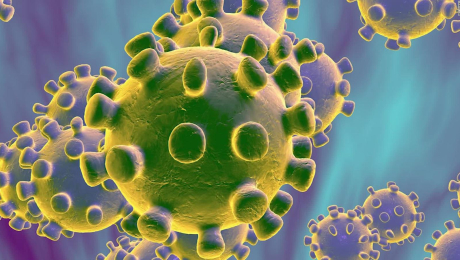To understand why a virus mutates, you must first understand how it behaves. In this episode, Dr. Elmer Huerta explains viral behavior and genomic surveillance, that is, the study of mutations in a virus.
You can listen to this episode on Apple Podcasts, Spotify, or your favorite podcast platform, or read the transcript below.
Hello, I am Dr. Elmer Huerta and this is your daily dose of information on the new coronavirus. Information that we hope will be useful to take care of your health and that of your family. Today we will see what is the behavior of a virus and what is genomic surveillance.
We will answer why this knowledge is so important in public health for the management of the pandemic.
There is no doubt that the pandemic is giving us the opportunity to learn many scientific concepts.
Virus vs. bacteria
Many people, for example, before the pandemic, mistook a virus for a bacteria. I think that this confusion is now much less frequent. Nowadays, many people know that confusing a virus with a bacterium is like not distinguishing between a candy and a cat.
Caramel is an inert substance that only expresses itself when it dissolves in the mouth and makes us feel its sweetness; otherwise, the candy is an inanimate object that is on the table waiting for someone to put it in their mouth to give “reason for its existence.”
On the contrary, the cat is a living being: it is born, grows, reproduces and dies. That is, it has a life of its own.
In the same way, like candy, the virus is an inert structure, it is a chemical molecule that is not born, does not grow, or dies. As we have described in previous episodes, it is made up of a central genome or nucleic acid (either RNA or DNA), covered by a shell of proteins, fats and sugars.
It has no life of its own, and like candy, it is waiting to enter a living being to infect it, take over its cellular reproduction system to make billions of copies of itself, and cause disease in the process.
Bacteria, on the other hand, like a cat, is a living being that is born, grows, reproduces, and dies. In addition, it fulfills various functions in nature, most of them useful.
That explanation can help us understand what viral behavior and genomic surveillance are.
How does a virus behave?
By reproducing, the virus makes billions of copies of its genome. In the process, it undergoes changes in the genetic sequence of its labile core RNA molecule.
The vast majority of these mutations are simple: they do not cause any changes in the behavior of the virus. However, some of them can modify it.
But, many wonder: what is the behavior of a virus?
An article published in the journal Nature on June 18, 2020 can give us an answer to that question.
There he tells us – after analyzing how the virus infects its victims – that “it is increasingly clear that many viruses cooperate, join forces to co-infect their hosts and break the antiviral immune defenses.”
The article describes how a special type of virus called bacteriophage (also known as phage), which infects bacteria, produces a chemical signal, a peptide of only six amino acids called “arbitrium” (Latin consensus), which is a kind of message that says: “I just attacked a bacteria.”
When the amount of this “arbitrium” increases in the environment, viruses realize that they have infected so many bacteria that not many are available. In this way, they stop destroying bacteria and enter a state of relative rest.
This is one example, among several others, that viruses are capable of behaving and modulating the rate of infections they produce.
In this sense, and as we have seen in the episodes of January 27 and 28, when new variants of Covid-19 appear that are capable of being more infectious and of resisting antibodies, one wonders: Are viruses realizing that someone is trying to control them and thus they mutate to adapt to attacks and be more efficient in their reproduction?
What is genomic surveillance?
This concept helps define the discipline called genomic surveillance, which, as its name implies, studies the multiple and diverse mutations that viruses undergo.
Its objective is to identify variants that may have some kind of clinical significance, such as being more infectious, developing resistance to antibodies, generating new routes of infection or having the capacity to cause a different disease.
Unfortunately, not all countries – including technologically advanced nations like the United States – have seen the potential to invest in genomic surveillance and are behind in identifying dangerous variants.
In that sense, it is surprising that the United States ranks 61st in the world in using genomic surveillance to identify variants of the new coronavirus.
Imagine, if we cannot identify the dangerous variants of the virus that attack us early, how can we fight an effective fight against such a silent and changing enemy?
Do you have questions about the coronavirus?
Send me your questions on Twitter, we will try to answer them in our next episodes. You can find me in @DrHuerta. You see that we answer them.
If you think this podcast is useful, help others find it by rating and reviewing it on your favorite podcast app. We will be back tomorrow so be sure to subscribe to get the latest episode on your account.

